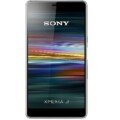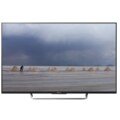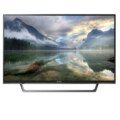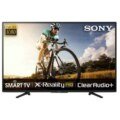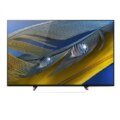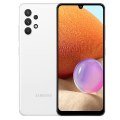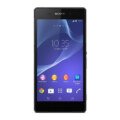Sony Xperia 5 IV
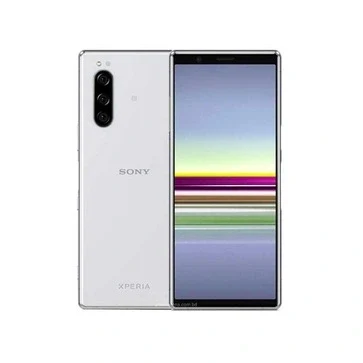
Sony Xperia 5 IV - Specs
Overview
| Status | Coming Soon |
| Network Technology Global wireless standard for telecommunication | GSM, HSPA, LTE, 5G |
| Price (Initial) | - |
Design
| Body Type Design Type called form factor refers to a mobile phone's size, shape, and style as well as the layout and position of major components of phone. There are three major form factors seen in mobile phones => bar phones, folding phones and sliding phones. | Bar Type |
| Dimensions | 156 x 67 x 8.2 mm (6.14 x 2.64 x 0.32 in) |
| Weight | 172 g (6.07 oz) |
| Colors | Green, Black, Ecru White |
Display
| Display Type Display Technology => A number of display technologies and types used in mobile phones => TFT (Thin Film Transistor), IPS (In-Place Switching), OLED (Organic Light Emitting Diode), AMOLED (Active-Matrix Organic Light-Emitting Diode), Super AMOLED (an even advanced version of AMOLED), Resistive Touchscreen (Resistive touchscreens contain two layer of conductive material with a very small gap between them which acts as a resistance), Capacitive Touchsceen (Capacitive touchscreen technology consists of a layer of glass coated with a transparent conductor) | OLED, 1B colors, 120Hz, HDR BT.2020 |
| Pixel Density Pixel Density (PPI) is refers to the concentration of pixels on a particular display, measured in pixels per inch (ppi). Pixel density is calculated by dividing the diagonal pixel resolution of a display by its diagonal size, higher pixel density better display quality. | 449 PPI Density |
| Display Size Size of the area where pictures and videos are displayed. | 6.1 Inches, 86.9 cm2 (~83.2% Screen-to-Body Ratio) |
| Resolution | 1080 x 2520 Pixels, 21:9 Ratio |
| Display Colors Display Colors is refers to the number of different shades of colors that the screen is capable of displaying => 64K colors, 256K colors and 16 million colors, Obviously 16M is highest available range of colors and better than others. | 16M, Colors |
| Protection Display Protection => Gorilla Glass is a special alkali-aluminosilicate glass shield with exceptional damage resistance that helps protect mobile displays from scratches, drops, and bumps of everyday use, It is always better to go for a smartphone with Gorilla Glass for that added protection and peace of mind. | Corning Gorilla Glass Victus |
Camera
| Primary Camera Camera is able to capture photographs and usually videos, The most important characteristics of a camera are the resolution (measured in megapixels), lens focus type (fixed or automatic), higher megapixel cameras are known to capture higher quality photos, but not always a good measurement of the photos quality. | 12 MP, 12 MP, 12 MP |
| Selfie Camera | 12 MP |
| Video |
Primary Camera :- 12 MP, 12 MP, 12 MP, Video 4K@24/25/30/60/120fps HDR, 1080p@30/60/120/240fps; 5-axis gyro-EIS, OIS Selfie Camera :- 12 MP, Video 4K@30fps, 1080p@30/60fps, 5-axis gyro-EIS |
| Camera Features |
Primary Camera :- 12 MP, f/1.7, 24mm (wide), 1/1.7", 1.8µm, Dual Pixel PDAF, OIS 12 MP, f/2.4, 60mm (telephoto), 1/3.5", Dual Pixel PDAF, OIS 12 MP, f/2.2, 124˚, 16mm (ultrawide), 1/2.5", Dual Pixel PDAF Selfie Camera :- 12 MP, f/2.0, 24mm (wide), 1/2.9", 1.25µm |
| Flash Flash Light => There is commonly two types of flash lights are used in camera mobile phones, LED Flash (LED flash offers lower power consumption with drive circuitry that takes up very little room, LEDs can be strobed faster than any other light source), Xenon Flash (xenon flash produces an extremely intense full-spectrum white light for a very short duration) | LED flash |
Core Specification
| Operating System OS => Every computer system run on a base software called Operating System (OS). Operating System controls all basic operations of the computer (such as smartphone, PDAs, tablet computers and other handheld devices). The Operating System allows the user to install and run third party applications (apps), apps are used to add new functionality to the device. | Android 12 |
| CPU CPU (Central Processing Unit) mostly known as processors, CPU processes instructions in order to carry out certain functions that make your device operate properly. Processors are often described as the brain of computers, smartphones and tablets, Smartphones and tablets rely on processors to carry out their every task, Processors are an incredibly important factor in selecting any type of computing device, including your smartphone. | Octa-core (1x3.00 GHz Cortex-X2 & 3x2.40 GHz Cortex-A710 & 4x1.70 GHz Cortex-A510) |
| Chipset Chipset is a group of integrated circuits designed to perform one or a more dedicated functions, often with real time computing constraints, Popular smartphones are equipped with more advanced embedded chipsets that can do many different tasks depending on their programming. | Qualcomm SM8450 Snapdragon 8 Gen 1 (4 nm) |
| GPU GPU (Graphics Processing Unit) is a single-chip processor designed to rapidly manipulate and alter memory to accelerate the creation of images in a frame buffer intended for output to a display, This includes things such as lighting effects, object transformations, and 3D motion. | Adreno 730 |
| RAM (Memory) RAM (Random Access Memory) is a type of computer memory that can be accessed randomly, any byte of memory can be accessed without touching the preceding bytes that allows information to be stored and accessed quickly from random locations. RAM is the most common type of memory found in computer systems, smartphones, tablets and other electronic devices. | 8 GB |
| Internal Storage Internal Storage is a data storage space (flash memory) mostly used in smartphones, tablets and other electronic devices where operating system, apps, music, photos, videos, files and other user data Is stored. | 128 GB & 256 GB |
Specification
| Sensors Sensors are electronic components that detects and responds to some type of input from the physical environment. The specific input could be light, heat, motion, moisture, pressure and location, The output is generally a signal that is converted to use in computing systems, a location sensor, such as a GPS receiver is able to detect current location of your electronic device. |
Fingerprint (Side-Mounted), Accelerometer, Gyro, Proximity, Barometer, Compass, Color Spectrum |
| Battery Backup | Li-Po 5000 mAh, non-removable |
| User Interface UI or user interface of a device is the look and feel of the on-screen menu system. How it works, its color scheme, how it responds to button presses, all of these things are part of the user interface. | - |
| Wi-fi Wi-Fi is a popular wireless networking technology using radio waves to provide high-speed network connections that allows devices to communicate without cords or cables, Wi-Fi is increasingly becoming the preferred mode of internet connectivity all over the world. | Wi-Fi 802.11 a/b/g/n/ac/6e, tri-band, Wi-Fi Direct, DLNA, hotspot |
| Bluetooth Bluetooth is a wireless communications technology for exchanging data between mobile phones, headsets, computers and other network devices over short distances without wires, Bluetooth technology was primarily designed to support simple wireless networking of personal consumer devices. | 5.2, A2DP, aptX HD, LE |
| GPS GPS The Global Positioning System is a satellite-based radio navigation system, GPS permits users to determine their position, velocity and the time 24 hours a day, in all weather, anywhere in the world, In order to locate your position, your device or GPS receiver must have a clear view of the sky. | A-GPS, GLONASS, BDS, GALILEO, QZSS |
| 3.5 mm Jack 3.5 mm jack is mostly found on earphones or headphones. | Yes |
| USB | USB Type-C 3.1 |
| Card Slot Memory Card Slot is a special slot for inserting a memory card. Memory cards allow you to expand the phone's built-in memory, A memory card (sometimes called a flash memory card or a storage card) is a small storage medium used to store data such as text, pictures, audio, and video, for use on small, portable or remote computing devices such as mobile phones, mp3 players, digital cameras. | MicroSDXC |
| SIM Type | Single SIM (Nano-SIM, eSIM) or Hybrid Dual SIM (Nano-SIM, eSIM, dual stand-by) |
| NFC NFC (Near field communication) is a set of standards for smartphones and similar devices to establish peer-to-peer radio communications with each other by touching them together or bringing them into proximity, usually no more than a few inches. | Yes |
| FM Radio | No |
| Wireless Charging Wireless Charging (Inductive Charging) uses an electromagnetic field to transfer energy between two objects. This is usually done with a charging station. Energy is sent through an inductive coupling to an electrical device, which can then use that energy to charge batteries or run the device. | - |
| Infrared Infrared connectivity is an old wireless technology used to connect two electronic devices. It uses a beam of infrared light to transmit information and so requires direct line of sight and operates only at close range. | - |
| Loudspeaker | Yes, with stereo speakers |
Sony known for its expertise in producing high-quality electronics, and their Xperia series of smartphones is no exception. The latest addition to this lineup, the Sony Xperia 5 IV, brings many impressive features packed into. Let’s dive into what makes this device a powerhouse for mobile enthusiasts.
Compact Design with Immersive Display
The Xperia 5 IV continues Sony’s tradition of delivering a compact design without compromising functionality. The device fits comfortably in the hand and slips effortlessly into pockets. Despite its small size, it boasts a stunning 6.1-inch OLED display with HDR support. With a cinematic 21:9 aspect ratio, this device is perfect for consuming multimedia content, providing an immersive viewing experience.
Exceptional Camera Capabilities
Sony has always been a frontrunner in smartphone photography, and the Xperia 5 IV is no exception. The device features a versatile triple-camera system with Zeiss optics, delivering outstanding image quality in various scenarios. With its primary lens, ultra-wide-angle lens, and telephoto lens, users can capture stunning landscapes, detailed portraits, and distant subjects with ease. Additionally, the Xperia 5 IV offers advanced camera features, including AI-based scene recognition, manual controls, and 4K video recording, allowing mobile photographers to unleash their creativity.
Powerful Performance and Multimedia Features
Under the hood, the Xperia 5 IV is powered by the Qualcomm Snapdragon 888 processor, ensuring lightning-fast performance and smooth multitasking. The device comes with ample RAM and storage options, allowing users to store their media libraries and install resource-intensive apps without worrying about running out of space. With support for 5G connectivity, users can experience blazing-fast internet speeds and seamless streaming on the go.
Enhanced Audio and Gaming Experience
Sony is renowned for its audio expertise; the Xperia 5 IV doesn’t disappoint. The device features high-resolution audio support and stereo speakers tuned by Sony’s audio engineers. Whether you’re listening to music, watching movies, or playing games, you can expect immersive sound quality that rivals dedicated audio devices. Additionally, the Xperia 5 IV incorporates features like Game Enhancer and DSEE Ultimate, ensuring an enhanced gaming experience and high-quality audio during gameplay.
Long-Lasting Battery and Fast Charging
The Xperia 5 IV is comes with a sizable battery that provides all-day usage. The device supports fast charging, allowing you to quickly top up your battery and get back to your activities.
In conclusion
the Sony Xperia 5 IV is a compact powerhouse that delivers exceptional performance and features for mobile enthusiasts. From its stunning display and versatile camera system to its powerful hardware and enhanc audio capabilities, this device is design to cater to the needs of those who demand the best. If you’re looking for a compact smartphone that doesn’t compromise on performance and multimedia capabilities, the Sony Xperia 5 IV should be on your radar.



